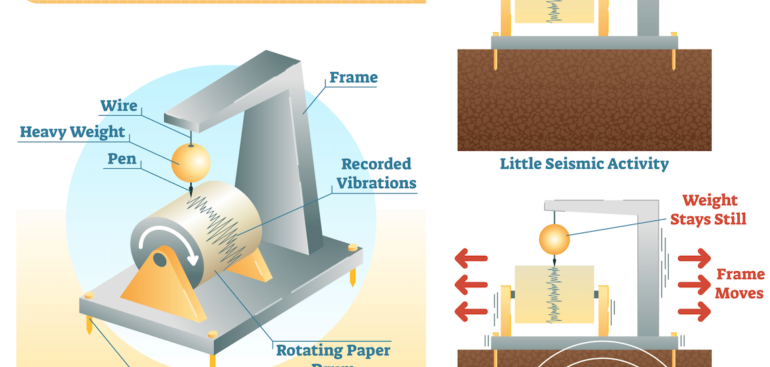Understanding and predicting seismic events with high accuracy requires not only sophisticated technology but also meticulous data correction techniques. Among these, correcting for phase errors and instrument responses is paramount in refining the data captured by seismometers. This blog delves into the essential corrections applied to seismic data, commonly misunderstood under terms like “Lippmann correction,” and explains their scientific foundation and importance.
The Essence of Seismic Data Corrections
Seismic data corrections are crucial for converting raw seismometer readings into accurate representations of ground movements. These corrections include adjusting for instrument response and correcting phase discrepancies, both of which are vital for the precise analysis of seismic data.
Correcting Instrument Response
Each seismometer has a unique response to incoming ground motions, characterized by its sensitivity across different frequencies. This response can significantly distort the recorded data by altering amplitude, phase, and frequency. The instrument response correction aims to reverse these distortions and retrieve the true ground motion:
a(t)=[d(t)∗r(t)]^−1
where:
- a(t) is the corrected ground motion.
- d(t) is the recorded data.
- r(t) is the instrument’s response function.
- The operator (*) denotes convolution, and (-1) indicates deconvolution.
This correction ensures that the data reflects the actual seismic events, free from the biases introduced by the instrument’s characteristics.
Phase Correction
Phase errors occur when there is a misalignment between the recorded seismic wave phases and their true timing. Correcting these errors involves adjusting the phase angle in the frequency domain:
S′(f)=S(f)⋅e^(−iϕ(f))
where:
- S(f) represents the original signal in the frequency domain.
- S'(f) is the corrected signal.
- ϕ(f) is the phase correction needed.
- i is the imaginary unit.
- e stands for the exponential function.
Phase correction is critical for ensuring the temporal accuracy of seismic waveforms, which is crucial for detailed seismic analysis and reliable earthquake detection.
Why Are These Corrections Crucial?
The fidelity of seismic data directly influences the effectiveness of seismic monitoring and analysis. Here are the key reasons why applying these corrections is indispensable:
- Accuracy: Precise corrections ensure that the seismic data truly represents the ground movements, which is essential for all further seismic analyses and interpretations.
- Reliability: Enhanced data accuracy increases the reliability of seismic monitoring systems, crucial for predicting and mitigating seismic hazards.
- Safety: Accurate seismic data improves the performance of early-warning systems, thereby increasing public safety and infrastructure resilience in earthquake-prone areas.
QuakeLogic’s Commitment to Data Precision
At QuakeLogic, we understand the importance of precise seismic data. Our seismometers are designed with built-in algorithms that automatically apply these critical corrections. This ensures that our clients receive the most reliable data possible, right from the moment of capture. Whether for research, safety systems, or industrial applications, QuakeLogic’s technology is engineered to provide the highest standards of data integrity and reliability.
For those interested in learning more about how our technology can enhance your seismic monitoring capabilities, please contact our sales team at sales@quakelogic.net or visit our website at QuakeLogic Seismometers.
By employing advanced correction techniques, QuakeLogic not only upholds the highest standards in seismic measurement but also ensures that our clients are equipped to meet the challenges of seismic activities with confidence and precision. Join us as we continue to lead the way in seismic technology innovation, helping to safeguard communities and advance scientific understanding.

